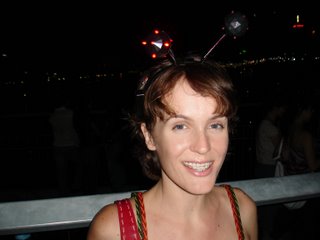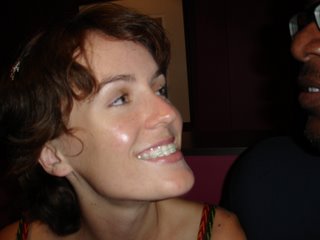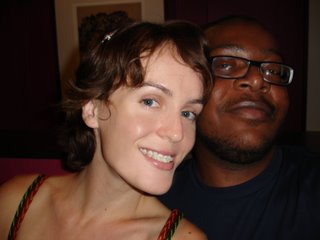
Friday, May 26, 2006
Monday, May 15, 2006
Casual Staff May Cost More
Casual staff may cost more: research
By Samantha BadenBOSSES who hire casual workers to save money and gain flexibility could end up paying more in the long run because of the hidden health and safety costs of temporary staff, research shows.
A study by University of NSW (UNSW) PhD student Maria McNamara has found that casual workers are at a greater risk of being injured compared to permanent employees, creating significant costs for companies.
Lower motivation and productivity also impose a further hidden cost on employers of casual workers, the research says.
Casual workers are often considered a cheaper alternative to permanent staff because they are not entitled to either paid holiday leave or sick pay.
"(But) there is a growing body of international research linking casual employment with an increased risk of occupational injury and illness as well as other adverse outcomes," Ms McNamara says.
"These adverse outcomes include increased staff turnover, lower motivation and job satisfaction, lower productivity and higher costs to companies."
With 2.3 million casual workers in Australia, more than one in four Australian workers are casual workers, according to the Australian Bureau of Statistics.
While it is too early to tell what effect the federal government's Work Choices legislation will have on the prevalence of casual labour, Ms McNamara says it could encourage even more companies to employ casuals.
"In making it generally easier for employers to restructure work arrangements, Work Choices may encourage the use of more temporary workers," the report says.
"On the other hand, the reduced access to unfair dismissal protection may make some employers less reluctant to take on permanent workers."
Whatever the effect, Ms McNamara says companies need to focus on ensuring temporary workers are properly trained.
"Companies that want to lessen the risks associated with a temporary workforce should pay attention to ensuring that all casual employees get appropriate levels of induction training and on-the-job supervision," Ms McNamara says.
"There have been many recent court cases where inadequate supervision of casual workers has been cited as contributing to increased accidents and injuries."
SouthWest Airlines Staff Profit-Sharing
On Some Flights, Millionaires Serve the Drinks

When Sandra Force went to work for Southwest, she was one of the upstart airline's employees to catch the eye of publications like Esquire.
DALLAS — To earn his pay, Mike Mitchel collects boarding passes and helps passengers onto airplanes. At age 56, he lives with his mother, takes a yearly vacation to Las Vegas when the room rates are cheapest, and counts movies and music CD's as extravagances.

"I like to save," Mr. Mitchel said. "I'll pick up a penny."
Mr. Mitchel, though, could readily afford to walk past any dropped change. As one of the 17 remaining active employees who helped start Southwest Airlines 35 years ago, he is rich. Quite rich. A beneficiary of Southwest's profit-sharing program — like all the airline's regular employees — he owns about 50,000 shares of Southwest stock, valued at roughly $800,000. And that is just a quarter of a portfolio that makes Mr. Mitchel a multimillionaire.
"I could retire tomorrow," he said.
So why doesn't he? After all, very few long-tenured workers in the airline industry even have that option, given that the pensions and wages of most have been sharply reduced in recent years in bankruptcies and other cutbacks.
But for Mr. Mitchel and his Southwest colleagues from the first days — eight flight attendants, five operations workers and four executives, each a millionaire — it is not about the money. Ask them why they stick around and they mention frugality and pride in earning their keep. And they say they simply like to work.
That is not all. Bound together by Southwest's initial struggle to survive, they are reluctant to end careers that for many of the 17 have defined their lives.
"My friends who left early at Southwest regret it so much," said Deborah Stembridge, who began as a flight attendant when the airline was just getting off the ground.
Accustomed only to success, it is as if they do not want to miss out on the rest of the story. They helped Southwest send big-name airlines like Pan Am and Eastern to the junk heap, and more recently helped bring United and Delta to their knees. Sure, it is hard work. But, they wonder, what might be next?
"This place has pushed employees to the breaking point," said Dan Johnson, 55, who started in 1971 as a Southwest ramp worker and now works in air traffic control. "It's part of why we're successful."
"I don't need to work," Mr. Johnson added at a recent reunion. "In fact, I paid off the house two weeks ago."
The original workers were lucky to be hired on to what at the time seemed a long-shot business proposition. And they had to show some grit to stick it out.
Sandra Force, an elementary school teacher and one-time beauty pageant winner from Memphis, was floating on a raft in the swimming pool of her Dallas apartment building one summer day in 1971, she said, hoping to attract the attention of a fellow tenant.
Rather than ask her out, however, he told her that a new local airline was hiring flight attendants. " 'And you wear hot pants,' " he told her. "I got up off my raft, dried off and went into my apartment and called Southwest," Ms. Force said. "They said, 'Please wear a dress,' because they wanted to see my legs." She was hired on the spot.
"My mother was devastated: 'Sandra, if you were going to quit your teaching job, why didn't you go with a well-known airline like Braniff?' " Braniff, which competed directly with Southwest in Texas, later failed.
Along with her fellow flight attendants, clad in orange hot pants and white vinyl go-go boots to attract attention to the new airline, Ms. Force initially flew between Dallas, Houston and San Antonio. "One time I did 12 trips back and forth to Houston in one day," she said. "My feet were killing me."
When Southwest's zany service and skimpy flight attendant outfits drew national attention, Ms. Force ended up on the February 1974 cover of Esquire magazine, a not altogether happy experience for the graduate of a Baptist college. The photo made her appear shapelier than she was. "They airbrushed," she said. "They didn't tell me they were going to do that."
But it fitted Southwest's image. "We were selling sex," Southwest's current president and one of the original 17, Colleen C. Barrett, said of the early years.
Southwest has always taken an underdog attitude. And early on, at least, the company actually was an underdog. It took four years from incorporation to the airline's first flight in 1971, largely because other airlines sued to prevent Southwest from operating.
Southwest's scrappy lawyer at the time, Herb Kelleher, is now its chairman. And perhaps one of his greatest accomplishments was keeping Southwest workers thinking like underdogs — even though the company now essentially sets the industry pace for fare prices and has a stock market value nearly as big as all the other domestic airlines combined.

Ms. Force quit her job as an elementary school teacher in 1971 to become a flight attendant for Southwest Airlines. Now, she’s a millionaire.
Descending a staircase in the lobby of Southwest's very plain headquarters here, trailing smoke from a cigarette stuck in the corner of his mouth, Mr. Kelleher, 75, called out to the original employees, assembled for an anniversary photograph: "I told you you'd never last."
Though Southwest has just about the lowest costs in the industry, it now pays the highest wages to many worker groups, making up the difference with higher productivity and by holding down its costs in a number of ways. Its planes fly longer hours and sit at the gate for fewer minutes.
But higher wages or other job benefits do not alone explain the loyalty of the idiosyncratic few who have stuck it out; many Southwest employees work longer hours and hustle more than counterparts at other airlines.
The most senior Southwest flight attendants can make more than $100,000 a year if they want, by working charter flights that pay double time. By comparison, United Airlines' top international flight attendants are paid at best about $50,000, according to their union, after some big wage givebacks during the carrier's bankruptcy.
Of the original flight attendants, "everybody is a millionaire," said one of them, Linda Pinka, 59. She drives a Ford pickup and lives with her parents.
Unlike older airlines, Southwest never had a pension plan, but rather started a profit-sharing plan, much of it paid in Southwest stock in the early years. Shares purchased for $10,000 in 1972 would be valued at about $12.6 million today.
Last year, Southwest paid $142 million into profit-sharing accounts, or 7.5 percent of each worker's salary. But that was down substantially from $180 million, or 16.2 percent of salary, paid out in 2000, when profits were higher and salaries were much lower. With such a stake in the airline's success, "you have a tendency to work a little harder," Ms. Pinka said.
Brenda Gruslin, another original flight attendant, had only been on an airplane a couple of times before being hired. On a lark, she accompanied a friend who was interviewing at Southwest. Sitting in a waiting area, a manager approached Ms. Gruslin and talked her into applying.
"I got the job and my friend didn't," she said. "We weren't friends after that."
Just 19 when she started, she followed her instincts and took seriously orders to have fun. "Passengers — you get a feel how far you can go with them," she said. "We had businessmen in suits pass out peanuts and pick up trash. We'd see how many people we could lock up inside the lavatory. They loved it. We had them on top of each other. Seven or eight? Quite a few. And those lavatories are pretty small."
Willie Wilson, originally a mechanic, who now works in flight operations, left and came back. In 1979, his profit-sharing account hit about $800,000. "The only way you could get access to it was become 100 percent disabled, die or quit," he said.
Leaving Southwest, he handed the money to an investment firm and watched as options, commodities and stock-trading burned through most of it. "I paid to go broke," he said.
Mr. Wilson took his family to Saudi Arabia and trained pilots there, earning a great wage. "My kids took taxis to school," he said.
But in 1983, when a Southwest manager called him on a Friday, saying there was a job for him if he arrived on Monday, "I said 'O.K.,' " Mr. Wilson recalled. Southwest includes him and another mechanic, Charlie Marcell, who left during the same period, in the original 17.
Though a union shop, Southwest is less bound by work rules than most other airlines. "If you saw something that needed to be done, and you thought you could do it, you did," Mr. Wilson said.
Mr. Wilson, 64, sold most of his Southwest stock five years ago, but said he still owned 31,000 shares, valued at about $500,000. He trades for himself now in other airline shares and in oil drilling companies.
The original workers stick around, even through injury and illness. Mr. Mitchel, the frugal ground terminal worker, has had two hernia operations. Mr. Marcell, 64, lost a kidney to cancer and more recently the disease showed up in a lung. He is on medicine to control its spread. "I'm going to work until I can't work anymore," he said. "I just like to work."
And Ms. Force, the one-time Esquire cover model, who is 61 and single, just completed chemotherapy for breast cancer and, after six months off, returned to work this month. She does not need the paycheck, with more than 100,000 shares of Southwest stock, valued at about $1.6 million.
"I love to work," she said. "Southwest is kind of my family and my husband."
Thursday, May 11, 2006
Miranda Devine on Bill Shorten
A class act takes a step into the light
IT'S Bill Shorten's 39th birthday tomorrow. But the head of the Australian Workers Union has already had his present: the rescue of Tasmanian miners Todd Russell and Brant Webb, which also happened to catapult him onto the national stage just in time to fulfil the political ambitions which many say will take him all the way to the Lodge.
He has not squandered the opportunity, keeping ego in check and displaying faultless instincts, apart from raising a beer to his lips a bit too ostentatiously in front of Channel Nine's cameras at the Beaconsfield pub after the miners walked free on Tuesday.
Whether the man suits the times or the times suit the man, it is clear that the diminutive, Jesuit-educated lawyer with an MBA covered himself in glory during the 14-day marathon rescue.
When the nation's media were crying out for news on the trapped miners, it was Shorten who delivered. Available night and day, he spoke articulately and engagingly, and livened up his commentary with original descriptions of prosaic mining matters. For instance, when rescue workers struggled to drill though solid quartz at the end of the rescue operation, he described their efforts as "like throwing Kleenex at rock".
He was quite poetic: "In a modern age of technology this has been physical force and willpower against nature and rock."
He was empathetic: "Don't worry about the 10-tonne rock in the cage where the men have been trapped. This was a 10-tonne emotional rock on the backs of all the families."
He was self-effacing, while grabbing the limelight. Three hours after the rescue, he was at the pub being interviewed by Channel Nine: "The rescuers deserve all the credit … It's their day. If you're ever in trouble you want the people behind me in this pub to come and get you 'cos they never give up."
He gave excellent, generous sound bites. Authenticity cannot be learnt, and it is hard to think of Kim Beazley in the same position saying anything that didn't appear to be shouted at an imaginary crowd.
Shorten also resisted the temptation when 60 Minutes reporter Richard Carleton prodded him to criticise mine management on safety issues: "I know that people … want explanations for this disaster. But we cannot afford to distract from the issue of rescuing the men. These men are still trapped in the earth and we want them back. And any behaviour that distracts from that, to be blunt, just has to wait."
Wearing his trademark AWU chambray shirt with matching bomber jacket, Shorten managed to work in the union line liberally, but it always seemed appropriate: "It's good workers are being recognised and, frankly, it's good unions are being recognised." He did more for the image of the union movement than any number of ACTU ads of working mothers weeping. "Today I rejoin the union," wrote Dorin Suciu of Bronte, in a letter to the editor yesterday.
Unions have themselves to blame in many ways for their predicament, with union participation in the private sector down to 17 per cent and an inglorious history of using health and safety issues as bargaining weapons. Thugs from the Construction, Forestry, Mining and Energy Union were notorious for doing snap inspections and closing down building sites for spurious reasons just to flex their muscles during contract negotiations.
But thanks to Shorten, the Beaconsfield mine disaster showed the best of the union movement, perhaps enough for the public to question if the pendulum is swinging too far away from workers' rights.
Cynics in the media mutter that "Showbag Shorten" capitalised on the miners' plight to boost his political fortunes. He will contest the next federal election as the Labor candidate for Maribyrnong after the incumbent, Bob Sercombe, stepped aside, saying: "He's not the messiah … He's just a naughty right-wing boy."
Shorten's biggest obstacle is probably the messiah syndrome, with many in Labor seeing him as the party's best chance as prime minister, the only person since Bob Hawke and Paul Keating capable of making the structural changes Australia needs to remain competitive with the least social disruption.
Now the nation has seen him in action, it's easy to see why he is hailed. After all, there's not a lot you can hide about yourself when you are on live TV for 14 days straight.
Shorten revealed a little of his world view when he spoke of where the trapped men drew their strength: "Having met their families I do realise the power of family and their support. The wives love their husbands. I think that's important to their wellbeing. Great kids, great parents. You get a sense, I think, that your family helps make you who you are."
Shorten grew up in working-class outer-suburban Melbourne where his late father, Bill, was an English migrant and wharfie, who rose to dock master. His mother, Ann, was a schoolteacher, descended from the Irish McGraths, O'Sheas and Nolans who came to Australia in 1853 to discover gold. She worked full-time so the family could afford to put Bill and his twin brother, Robert (an investment banker in Sydney), through Melbourne's Catholic Xavier College. She went on to study for a PhD and a law degree.
Shorten is married to stockbroker Debbie Beale, whom he met while they were both studying for their MBAs. She is the daughter of Julian Beale, a wealthy Melbourne investor and former federal Liberal MP. They live in Moonee Ponds, a gentrified working-class inner-Melbourne suburb.
Though he is criticised for "marrying the Liberal Party", people who know the couple say she is more left-wing than he. He comes from the traditional Catholic right wing of the ALP which John Howard has managed to woo in recent years and where the future success of the ALP probably still lies.
Shorten's next test comes in his response to the Beaconsfield mine collapse, which he will hammer out in a meeting with union members today.
The nation will be tuned in to his career now with more than passing interest.




